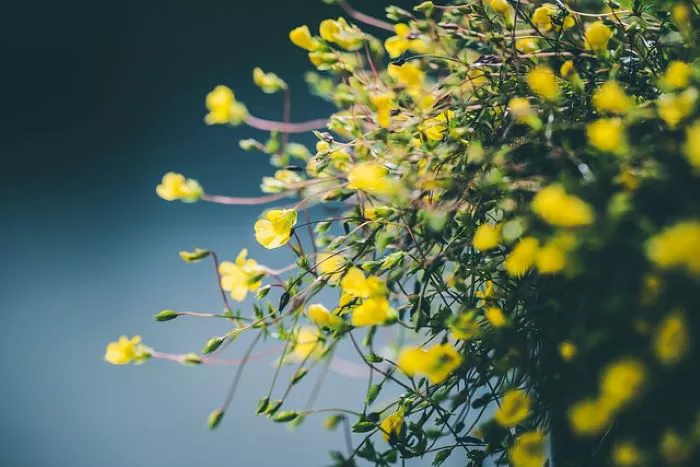Growing flowers from seeds can be a rewarding experience for gardeners of all levels. One of the key questions many gardeners have is how long it takes for flower seeds to sprout. The time it takes for seeds to germinate can vary widely depending on several factors. This article explores the germination process, the factors that influence sprouting time, and tips for successful seed germination.
Understanding Seed Germination
Seed germination is the process by which a seed develops into a new plant. It begins when a seed absorbs water, swells, and breaks through its outer shell. This process requires optimal conditions, including moisture, temperature, and light. Once the seed has germinated, it will develop roots and shoots, eventually growing into a mature plant.
The germination process can be divided into several stages. First, the seed absorbs water, which activates enzymes that begin the growth process. Next, the seedling emerges from the soil, with the root growing downward and the shoot growing upward. Finally, the seedling develops leaves and begins photosynthesis.
Factors Influencing Germination Time
Several factors can influence how long it takes for flower seeds to sprout. Understanding these factors can help gardeners create the best conditions for successful germination.
Temperature is one of the most critical factors. Most flower seeds germinate best within a specific temperature range. For many species, this range is between 65°F and 75°F (18°C to 24°C). Some seeds may require warmer or cooler temperatures to germinate. It is essential to check the specific requirements for each type of flower seed.
Moisture is another crucial factor. Seeds need consistent moisture to germinate. If the soil is too dry, seeds may not sprout. Conversely, overly wet soil can lead to rot. Gardeners should keep the soil evenly moist without waterlogging it.
Light also plays a role in germination. Some seeds require light to germinate, while others need darkness. It is important to read the seed packet instructions to determine the light requirements for specific flower seeds.
Seed quality is an additional factor. Fresh seeds typically germinate faster and more reliably than old or improperly stored seeds. It is advisable to use seeds from a reputable source and check the expiration date on the packet.
Typical Germination Times for Common Flower Seeds
The time it takes for flower seeds to sprout can vary significantly depending on the species. Here are some typical germination times for common flower seeds:
Annual Flowers: Many annual flowers, such as marigolds and zinnias, typically germinate within 7 to 14 days. These flowers are popular for their vibrant colors and are often used in gardens and containers.
Perennial Flowers: Perennial flowers, like coneflowers and daisies, may take longer to germinate. They usually sprout within 14 to 30 days. Some perennials may require stratification, a process that mimics winter conditions, to encourage germination.
Biennial Flowers: Biennial flowers, such as hollyhocks, often germinate within 14 to 21 days. These flowers grow foliage in the first year and bloom in the second year.
Wildflowers: Wildflower seeds can vary widely in germination time. Some may sprout within 10 to 14 days, while others may take several weeks. Wildflowers often have specific requirements based on their native environments.
Tropical Flowers: Tropical flower seeds, such as hibiscus, may take longer to germinate, often requiring 14 to 30 days or more. These seeds may also have specific temperature and moisture needs.
Tips for Successful Seed Germination
To improve the chances of successful seed germination, gardeners can follow these tips:
Start Seeds Indoors. Starting seeds indoors allows for better control of temperature and moisture. Use seed trays or pots filled with a quality seed-starting mix. This method can extend the growing season for many flowers.
Provide Adequate Light. If starting seeds indoors, ensure they receive sufficient light. Use grow lights or place them in a sunny window. Proper lighting helps prevent leggy seedlings and promotes healthy growth.
Maintain Consistent Moisture. Keep the soil consistently moist but not soggy. Use a spray bottle or a gentle watering can to avoid disturbing the seeds. Covering trays with plastic wrap can help retain moisture until the seeds sprout.
Monitor Temperature. Use a seedling heat mat if necessary to maintain optimal soil temperatures. This can be especially helpful for seeds that require warmer conditions to germinate.
Be Patient. Some seeds may take longer to germinate than others. It is essential to be patient and provide the right conditions. Keep an eye on the soil moisture and temperature throughout the germination process.
Conclusion
Understanding how long it takes for flower seeds to sprout is essential for successful gardening. The germination time can vary widely depending on the type of flower, environmental conditions, and seed quality. By providing the right temperature, moisture, and light, gardeners can create an ideal environment for seed germination.
With proper care and attention, flower seeds can sprout and develop into beautiful plants. This process not only enhances the beauty of gardens but also provides a sense of accomplishment for gardeners. Whether growing annuals, perennials, or wildflowers, knowing what to expect during the germination process can lead to a more rewarding gardening experience.


